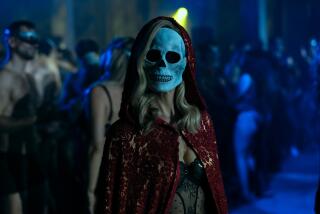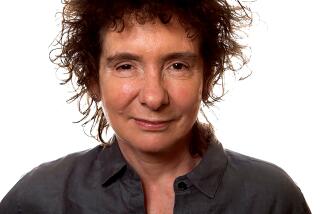Witches cast shadows over Jeanette Winterson’s ‘The Daylight Gate’
Jeanette Winterson’s new novel is a strange and spare piece of horror writing about witch trials that arrives on these shores just in time for Halloween.
“The Daylight Gate” is based on a real-life story of the Pendle Witches, men and women charged in 1612 with using their alleged craft to murder innocents in Lancashire in northwest England. Winterson re-creates the turbulent times that fed the anti-witch hysteria. King James, obsessed with the idea of witchcraft, has ascended to the throne. And Lancashire is famous as a hotbed of thievery and outlawed Catholicism.
“The north of England is untamed,” Winterson begins. “It can be subdued but it cannot be tamed. Lancashire is the wild part of the untamed.”
Bookshelf: Sign up for our email newsletter
Winterson is a shape-shifter of the British literary scene, an author willing to tackle many subjects and forms, including children’s books, memoirs, screenplays and comic books. She’s written science fiction before, in the novel “The Stone Gods,” though she bristled when critics attached the “genre” label to it. Many will also read “The Daylight Gate” as a work of genre, mostly because Winterson gives her stylistic talents a rest as she speeds through a fast-paced plot that’s heavy on dialogue (long passages read more like a screenplay) and light on description.
“The Daylight Gate” was released in Britain last year by Hammer. It’s a house that, according to its website, publishes “intelligent horror in the form of film tie-ins” and literary classics “re-imagined to bring them to a whole new market with a modern and sophisticated twist.” Winterson’s novel hews closely to that formula.
“The Daylight Gate” is said to take place in the early 17th century, but the novel’s accused witches often act and feel like modern-day bohemians. They have same-sex relationships and group sex, and they aren’t terribly discreet about it. One woman becomes an entrepreneur and grows wealthy enough to earn the envy of high society. A pair of Winterson’s characters even rent a warehouse in the Bankside district of London — given that it’s two centuries before the Industrial Revolution, they were lucky to find one.
The sex acts in “The Daylight Gate,” consensual and nonconsensual, usually unfold with a few terse phrases devoid of the sorts of details that can arouse or repulse. There are many “erect” members, including one produced by a man while under torture. A few sentences later, the tortured man loses said member (and the rest of his genitalia) to the torturer’s knife. Somehow, the victim survives his brutal maiming.
Winterson breaks all sorts of rules of about good writing in “The Daylight Gate.” Sentence variety? Who needs it when you’re racing to get another “ghostly presence” into a scene, as in this passage in which Alice Nutter, later to be accused of witchcraft, responds to hearing a mysterious whispering of her name:
“She smothered the fire screen … and went to the study door. She opened it onto the long, dark corridor that led to her bedroom. She looked this way and that; there was no one in the corridor. She went back inside and closed the door. She had a feeling of foreboding.”
Winterson often describes the witchcraft, actual and perceived, with raw and evocative prose. But just as often, she resorts to cliché. Consider the opening to the chapter in which Elizabeth Device prepares a potion to cast a spell.
“She was tending to a cauldron coming to the boil over a dirty fire. A rough altar, a pair of sulphurous candles and a skeleton still chained to where its owner’s body had left it, completed the furnishings of the cellar.”
Candle? Cauldron? Skeleton? Check, check, check. Only the spider is missing. No fear, there’s also a talking spider in “The Daylight Gate.”
Later, Shakespeare enters. The Bard is retired in Stratford, but he’s left his small-town comforts to come north to attend a performance of “The Tempest.” He offers one of the doomed women a warning — and asks her for advice on the ending of “The Winter’s Tale.” Will anyone believe it, he asks, if I put a talking statue in my play?
It’s one of the weirdest cameos Shakespeare has ever made, in a book that may just be the weirdest one Winterson will ever write.
The Daylight Gate
A novel
Jeanette Winterson
Grove: 240 pp, $24
More to Read
Sign up for our Book Club newsletter
Get the latest news, events and more from the Los Angeles Times Book Club, and help us get L.A. reading and talking.
You may occasionally receive promotional content from the Los Angeles Times.







